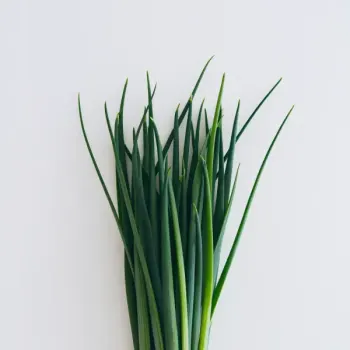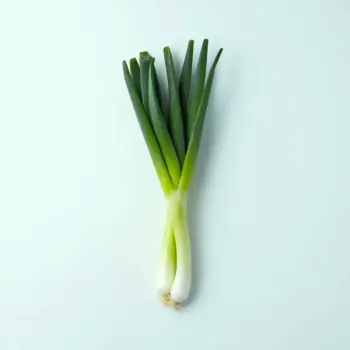Green onions, or scallions, are young onion plants with a mild taste and crisp texture used both cooked and raw in dishes. Chives are delicate herbs with a subtle onion flavor, typically used fresh as a garnish or seasoning in culinary applications.

Green onions, also known as scallions, are young shoots of the onion plant with a mild flavor. They are harvested before the bulb has a chance to swell. Both the white base and the green stalks are used in cooking for their crisp texture and a fresh, oniony taste.

Chives are small, bulbous herbs belonging to the allium family, closely related to onions, garlic, and leeks. They have long, thin green stems that are finely chopped and used as a garnish or seasoning. Chives offer a delicate onion flavor and are commonly used fresh.
Green onions have a more pronounced and sharp flavor, with a slight crunch, and can be cooked or used raw. Chives, on the other hand, have a more subtle and delicate taste and are mostly used fresh to preserve their flavor, as cooking can diminish their taste. Green onions have a larger bulb and a longer white stem, whereas chives are thin and tube-like throughout. Additionally, green onions are widely used in a variety of cooked dishes, whereas chives are often reserved as a garnish or for light incorporation into cold preparations.

Your ultimate Recipe Box, Meal Planner, and Cooking Class all in one
Green onions are a fantastic addition to omelets, scrambled eggs, and quiches. They provide a bold onion flavor and a satisfying texture. To maximize their potential, they can be sautéed lightly before adding to the egg mixture. Chives are best used as a garnish on top of cooked egg dishes such as deviled eggs, frittatas, or egg salad. Their delicate flavor complements eggs without overpowering them, and they add a beautiful pop of color.
Green onions can be simmered in soups and stews, contributing their robust flavor to the base of the dish. They are excellent in Asian broths, potato soups, and rustic stews. Chives should be sprinkled on top of soups and stews right before serving to maintain their flavor and texture. They work well in cream-based soups like cream of mushroom or potato leek soup.
Green onions can be sliced thinly and mixed into salads for a sharp bite. They are great in grain salads, pasta salads, or green salads, adding both flavor and crunch. Chives can be chopped finely to garnish salads, providing a hint of onion without overwhelming the other flavors. They are particularly suitable for delicate salad greens or in dressings.
Both green onions and chives are low in calories and rich in vitamins and minerals, especially Vitamin K.
| Nutrient | Chives ( per 100g ) | Green Onions ( per 100g ) |
|---|---|---|
| Fat | 0.73g | 0.19g |
| Protein | 3.27g | 1.83g |
| Calories | 30 | 32 |
| Vitamin C | 58.1mg | 18.8mg |
| Vitamin K | 212.7µg | 207µg |
| Carbohydrates | 4.35g | 7.34g |
Yes, but chives should be added at the end of the cooking process or used as a garnish to maintain their delicate flavor.
They can be substituted for each other to some extent, but expect a difference in flavor intensity and texture.
Chives are best used fresh and not cooked, as heat can diminish their flavor.
Both the white base and the green stalks of green onions are edible and commonly used in various dishes.
Green onions can be stored in the refrigerator crisper, while chives should be wrapped in a damp paper towel and placed in a plastic bag before refrigerating to maintain freshness.